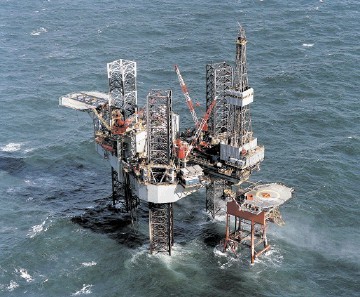
A long-awaited weather window during November resulted in a higher level of well starts on the UK Continental Shelf than at any other time in 2011.
But the momentum didn’t last and December saw just two E&A (exploration & appraisal) starts, both of those sidetracking from rigs already on station.
The 2011 tally closed at 46 E&A starts; 30 spuds and 16 sidetracks, with the number of spuds evenly split between exploration and appraisal wells. Thirteen of the 16 sidetracks, predominantly geological in nature, were from appraisal wells and three exploratory. Also, two wells were re-spudded and two re-entered.
Combined E&A spuds (starts) were on a par with 1999 (the previous low in 1978 seeing just 28 spuds). Exploration spuds in 2011 were at their lowest since 2002 and the number of appraisal spuds was the lowest since 2003.
A total of 124 development/production wells were started last year; comprising 68 initial wells and 56 sidetracks. Three wells were re-entered.
This was broadly in line with 2010, although a relatively small number of fields accounted for much of the drilling and Apache’s Forties field stands out as the “most drilled field” of 2011. Twenty development/production drilling programmes are currently ongoing across 17 fields and utilising a mix of platform-based facilities and mobile rigs.
Eight mobile units – three semi-submersibles, for jack-ups and a drillship – are active on E&A wells currently; two on exploration and six on appraisal wells, two of which were started in December.
Poor weather conditions mean that the 2012 E&A drilling season is yet to ramp up – just two starts are noted so far – both appraisals. A number of units remain on standby waiting on weather before they move.
West of Shetland: just one mobile unit – the Stena Carron drillship – is active, on Chevron’s well 213/28-1 (Aberlour prospect).
Northern North Sea: two semisubmersibles remain on location; the Sedco 714 on Total’s 3/14a-19Z Ardbeg sidetrack and Awilco’s WilHunter on MPX’s well 3/3b-13 appraising the Orlando discovery and yet again delayed by technical issues and poor weather conditions.
Central North Sea: four wells are active although, when conditions allow, that number should rise. Operations continue on BG’s long-running and sidetracked Jackdaw appraisal, well 30/2a-8Z (jack-up Rowan Gorilla VI) and on Maersk’s Culzean appraisal 22/25a-11 (Ensco 101), although both should be nearing completion.
In that same HP/HT (high pressure / high temperature) province, GDF Suez made one of the two January starts; well 30/13b-10 (Galaxy 2) appraising the Upper Jurassic Jacqui field, while Premier initiated well 21/28a-11 (Sedco 704) appraising the eastern extent of the Eocene Fyne field.
During December, operations were completed on EnCore’s 14/30a-5 Tudor Rose appraisal (plugged and abandoned showing oil), EnQuest’s 21/13a-5 Crathes/Moon appraisal (P&A – oil), Antrim’s 21/29d-11Z (suspended.- oil) on the Eocene Erne Prospect, Nexen’s 39/1b-3 (not thought a success) on the Jurassic Edgware prospect, BG’s 22/15-4 (P&A – oil) on the Palaeocene Esperanza prospect and GDF SUEZ’ Faraday prospect well 30/1a-11, which is understood to have encountered hydrocarbons in the deep HPHT objective.
Southern North Sea: one well currently drilling; Wintershall’s producing Wingate field appraisal, well 44/24b-A2Z with the jack-up Ensco 80. The pilot hole (A2) is thought to have been successful and was P&A’d during December ahead of the current sidetrack starting.
Current indications suggest 2012 will be better than 2011. The rig market has tightened though and operators looking to translate further plans into action may find drilling units hard obtain.
Despite depressed activity levels in 2011, our upcoming analysis will show that, at least on a technical level, discoveries continued to be recorded during the year and success rates may even show a lift. Our current forecast well pool currently rides above 200.
Simon Robertshaw’s column is courtesy of oil & gas analysts Hannon Westwood
Recommended for you
